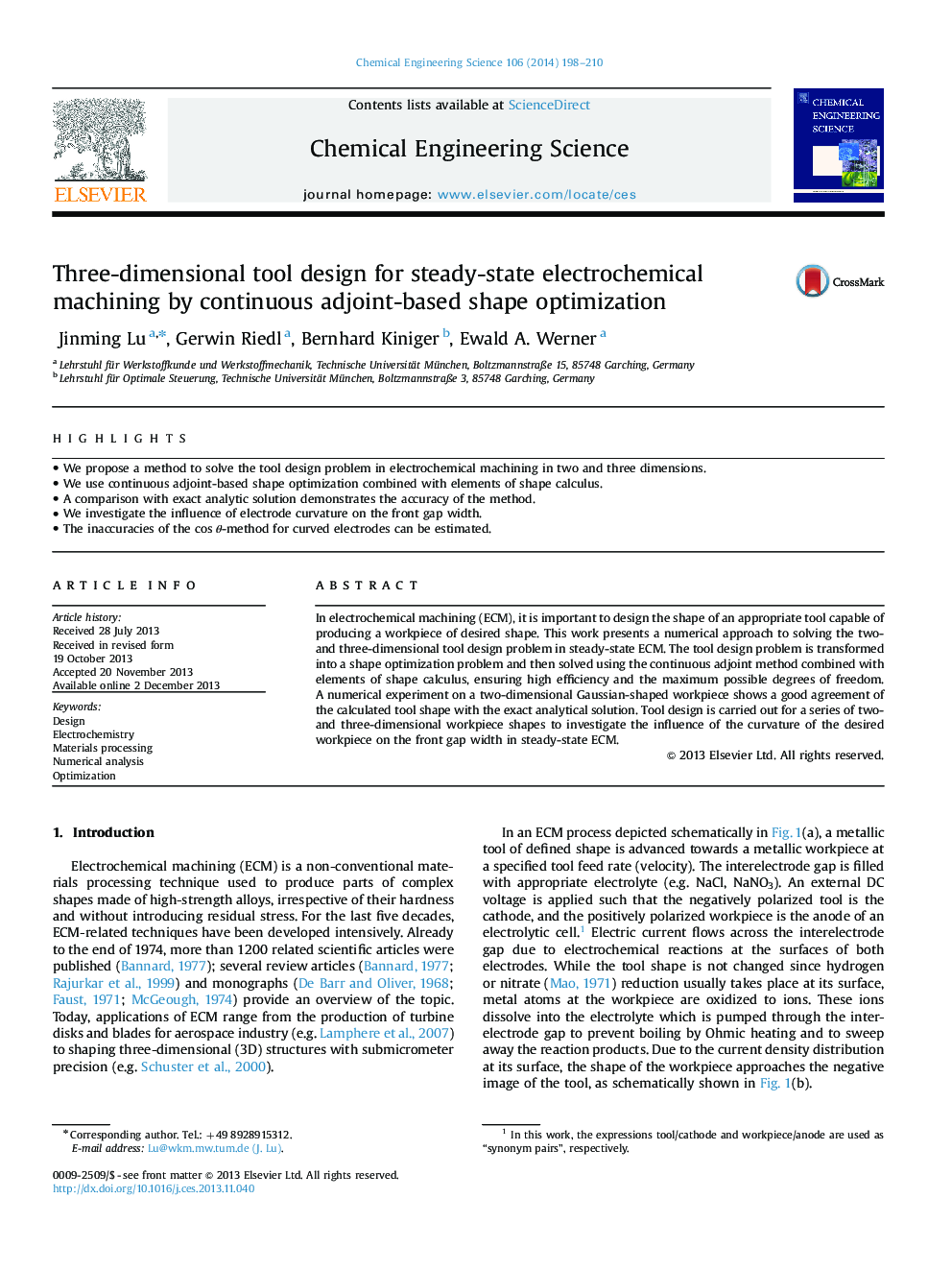| Article ID | Journal | Published Year | Pages | File Type |
|---|---|---|---|---|
| 155014 | Chemical Engineering Science | 2014 | 13 Pages |
•We propose a method to solve the tool design problem in electrochemical machining in two and three dimensions.•We use continuous adjoint-based shape optimization combined with elements of shape calculus.•A comparison with exact analytic solution demonstrates the accuracy of the method.•We investigate the influence of electrode curvature on the front gap width.•The inaccuracies of the cos θ-method for curved electrodes can be estimated.
In electrochemical machining (ECM), it is important to design the shape of an appropriate tool capable of producing a workpiece of desired shape. This work presents a numerical approach to solving the two- and three-dimensional tool design problem in steady-state ECM. The tool design problem is transformed into a shape optimization problem and then solved using the continuous adjoint method combined with elements of shape calculus, ensuring high efficiency and the maximum possible degrees of freedom. A numerical experiment on a two-dimensional Gaussian-shaped workpiece shows a good agreement of the calculated tool shape with the exact analytical solution. Tool design is carried out for a series of two- and three-dimensional workpiece shapes to investigate the influence of the curvature of the desired workpiece on the front gap width in steady-state ECM.
